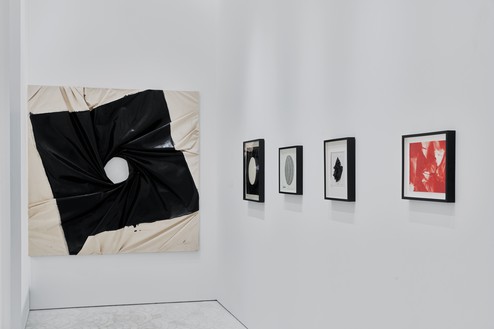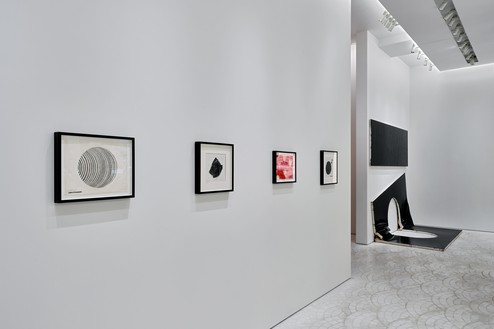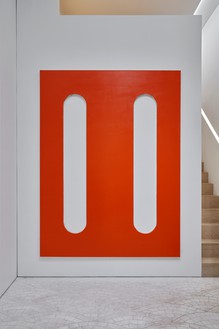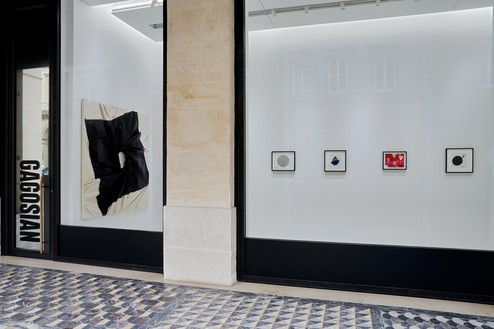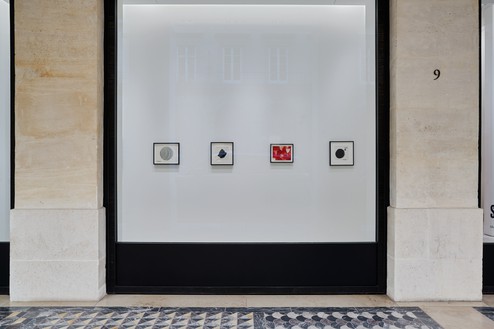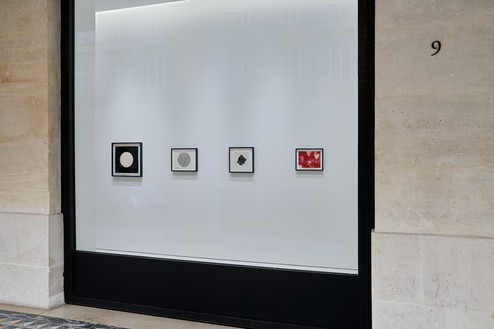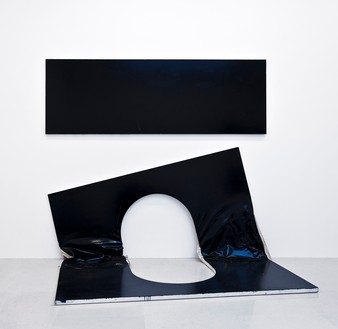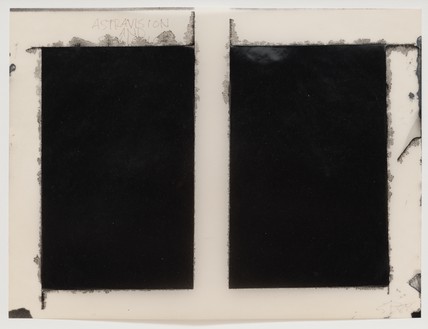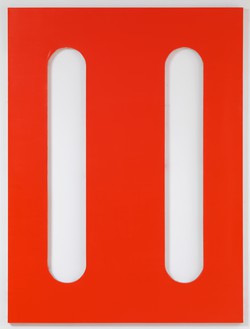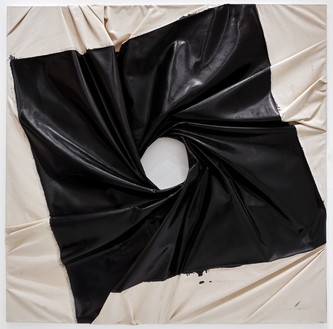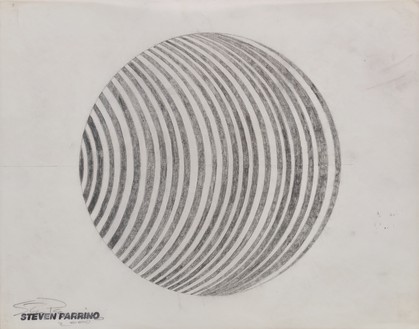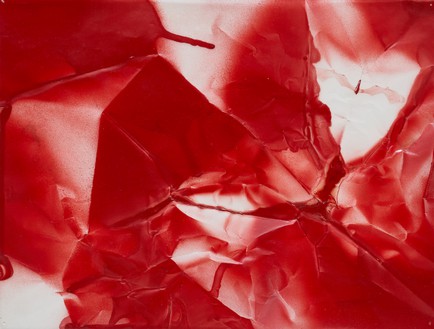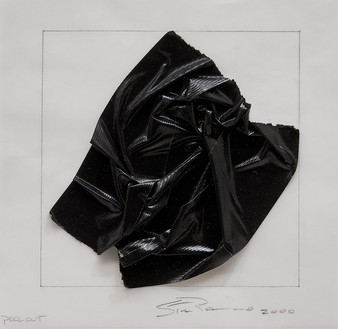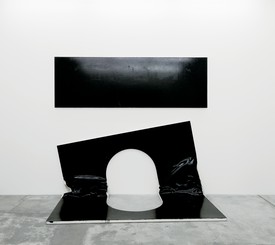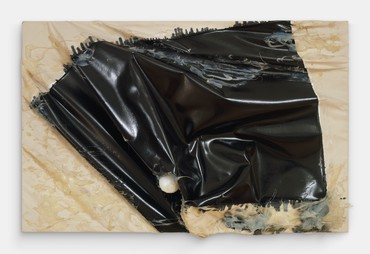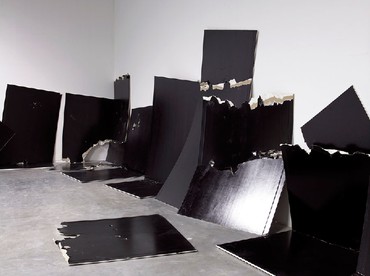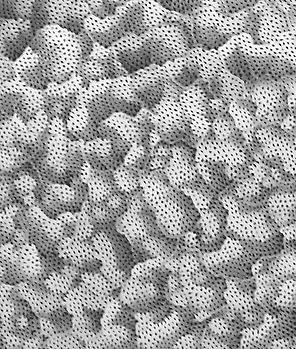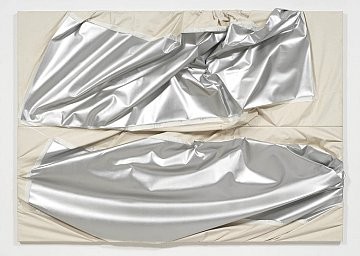About
My paintings are not formalist, nor narrative. My paintings are realist and connected to real life, the social field, in brief: action.
—Steven Parrino
Gagosian is pleased to present a survey exhibition of works by influential American artist Steven Parrino (1958–2005). The exhibition features manipulated canvas paintings, works in sprayed enamel on vellum, and other works on paper. Building on a practice—painting—that he had come to regard as critically dead and buried, Parrino steered a course from restrained abstraction to a far more complex and confrontational visual language. Twisting, crumpling, incising, and otherwise enthusiastically mistreating his supports and surfaces, he reconfigured what might have functioned as purely formalist paintings and works on paper into “misshaped” sculptural monochromes. Initially grouped with the Neo-Geo and Appropriation artists of 1980s downtown New York, Parrino ultimately pursued a more idiosyncratic and iconoclastic vision.
The exhibition in Paris is anchored by three large paintings: Touch and Go (1989–95), Spin-Out Vortex (Black Hole) (2000), and The Self-Mutilation Bootleg 2 (The Open Grave) (1988/2003). All are punctuated by holes. In the first work, the flat surface of a panel coated in red enamel is interrupted by two lozenge-shaped apertures, which lend it a utilitarian air. In the second, a circular void at the heart of a black-lacquered square seems to exert a spiraling gravitational pull on the surrounding fabric, twisting it off its axis and threatening to swallow it whole. And in the third, a shiny black rectangular canvas hangs above a larger panel of the same color. The last also features a geometric opening and lies on the floor, bent and slumped against the gallery wall. Originally, the work was brightly colored; Parrino repainted and reconfigured it fifteen years after it was first exhibited.
Mes peintures ne sont pas formalistes, ni narratives. Mes peintures sont réalistes et connectées à la vie réelle, au champ social, en bref : à l’action.
—Steven Parrino
Gagosian a le plaisir de présenter une exposition des œuvres de l’influent artiste américain Steven Parrino (1958–2005). L’exposition présente des peintures dont les toiles ont été manipulées, des œuvres en émail pulvérisé sur du vélin et plusieurs œuvres sur papier. S’appuyant sur une pratique – la peinture – qu’il en était venu à considérer comme morte et enterrée, Parrino s’est éloigné d’une abstraction restreinte pour se rapprocher d’un langage visuel beaucoup plus complexe et conflictuel. Tordant, froissant, incisant et maltraitant avec enthousiasme ses supports et ses surfaces, il reconfigure ce qui aurait pu fonctionner comme des peintures et des œuvres sur papier de façon purement formaliste, en monochromes sculpturaux “déformés”. Initialement associé au mouvement Néo-Géo et aux artistes Appropriationnistes des années 1980 à New York, Parrino a finalement poursuivi une vision plus idiosyncrasique et iconoclaste.
L’exposition à Paris s’articule autour de trois grandes toiles : Touch and Go (1989–95), Spin-Out Vortex (Black hole) (2000), et The Self-Mutilation Bootleg 2 (The Open Grave) (1988/2003). Elles sont toutes ponctuées d’espaces vides. Dans la première œuvre, la surface plane d’un panneau recouvert d’émail rouge s’ouvre sur deux espaces vides en forme de losange. La deuxième œuvre quant à elle présente un carré laqué noir au cœur duquel un vide circulaire semble exercer une attraction gravitationnelle en spirale sur le tissu qui l’entoure, le tordant hors de son axe et menaçant de l’avaler tout entier. Enfin, la troisième œuvre se compose d’une première toile rectangulaire noire et brillante accrochée au-dessus d’un panneau plus grand et de la même couleur. Ce dernier panneau présente une ouverture géométrique et repose sur le sol, l’œuvre est pliée comme si elle était tombée contre le mur de la galerie. À l’origine, l’œuvre était de couleur vive ; Parrino l’a ensuite repeinte et reconfigurée, quinze ans après sa première présentation.
Dans plusieurs œuvres antérieures, dont Disruption (1981) et International Style (1983), Parrino associe des peintures acryliques monochromes sur des toiles déchirées ou froissées à des photographies encadrées, reproduisant des images de confrontation tel le cliché de 1928 de Ruth Snyder, la première femme dont l’exécution sur la chaise électrique a été photographiée. La composition de ces œuvres rappelle les diptyques de la série Death and Disaster d’Andy Warhol, dans lesquels l’image sérigraphiée d’une catastrophe côtoie un panneau uni de la même couleur. L’utilisation de références pop-culturelles caractérise également les dessins et les collages de Parrino ; parmi les artefacts et les images présentés ici, figure une variation du logo de la série de bandes dessinées The Hulk. Parrino associe et juxtapose de telles références tendancieuses avec des esquisses et des études pour créer des peintures, utilisant le graphite, l’encre et le ruban adhésif – ainsi que des matériaux plus surprenants tels que l’émail pour moteur et le vinyle pailleté – pour remplacer les composants substantiels d’œuvres plus importantes. Ailleurs, en pulvérisant de l’émail sur des feuilles de vélin froissées, il laisse les textures du support déterminer la structure et les détails.
#StevenParrino
Artist
News
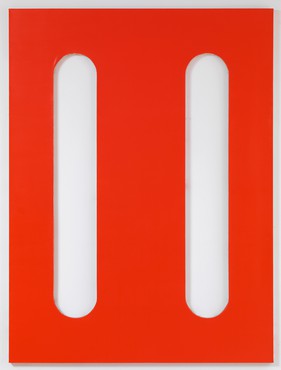
Visit
After Hours
Steven Parrino
April 4–7, 2022
Gagosian, rue de Castiglione, Paris
For four nights the rue de Castiglione gallery will be open until 8pm for after-hours viewing of Steven Parrino, an exhibition featuring manipulated canvas paintings, works in sprayed enamel on vellum, and other works on paper. The show is anchored by three large paintings: Touch and Go (1989–95), Spin-Out Vortex (Black Hole) (2000), and The Self-Mutilation Bootleg 2 (The Open Grave) (1988/2003). Initially grouped with the Neo-Geo and Appropriation artists of 1980s downtown New York, Parrino ultimately pursued a more idiosyncratic and iconoclastic vision.
Steven Parrino, Touch and Go, 1989–95 © Steven Parrino, courtesy the Parrino Family Estate. Photo: Rob McKeever
